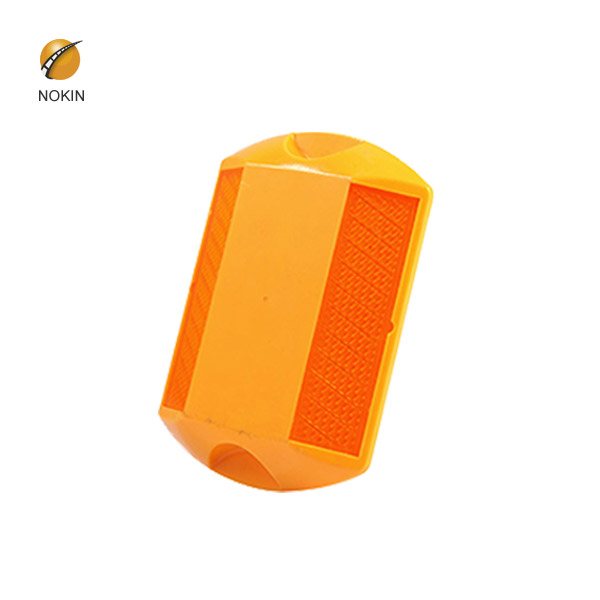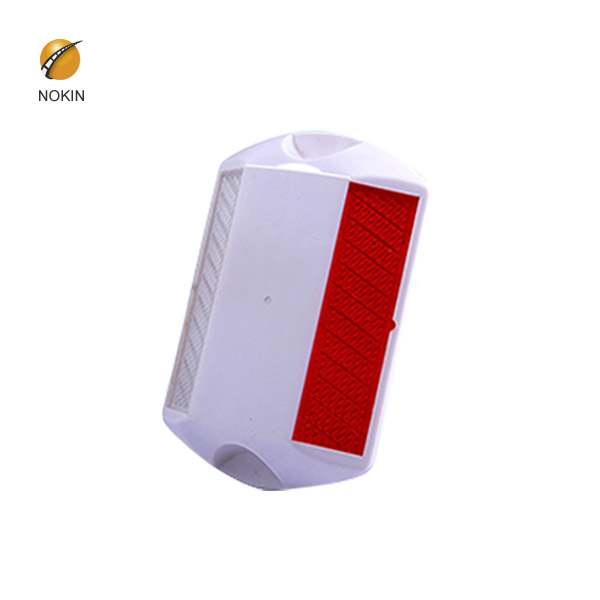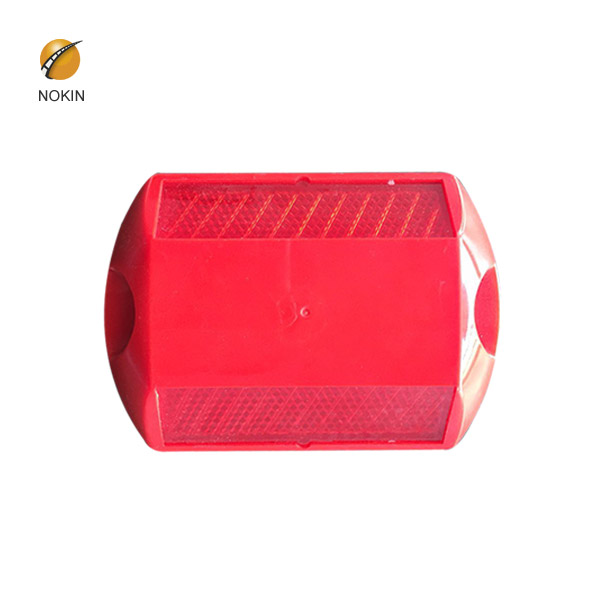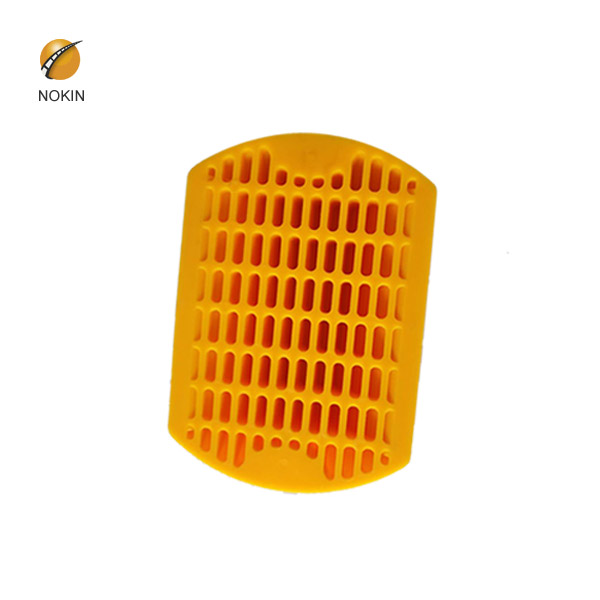



Reflective studs on motorway are safety devices used on roads. These devices are usually made of plastics, ceramics, thermoplastic coatings or occasionally metal, and come in a variety of shapes and colors. Reflective studs on motorway include lenses or reflective sheets, which enhance visibility by reflecting automobile headlights. Some other names for specific types of reflective studs include convex vibration lines, Botts' dots, contour lines, cat's eyes, road studs or road turtles. Sometimes they are simply referred to as "reflectors".
The specifications of Reflective studs on motorway:
| Body material | ABS |
| Size | 116*82*18mm |
| Lens Material | PMMA |
| Reflector type: | Double side/Single side |
| Color | Red, Yellow, Green, Blue, White |
| Packing | 50pcs/carton |
| Carton size | 38*36*23cm |
| Load capacity | 15Tons |

Part 2 TD26/07 is an official standard applicable to the inspection and maintenance of road markings and road studs on motorways and all-purpose trunk roads in the UK. The requirements of this standard relate to reflective permanent road studs of all types currently and subsequently used by the relevant authority.
White reflective road studs mark the middle of the driveway or road. Red mark the left edge of the road, indicating no traffic. Amber reflective road studs mark the central reserve of a two-lane or highway. Green reflective road marker mark the laying and branching at the edge of the main lane and the dividing line of the non-motorized vehicle
In practice, this is usually the left edge of the carriageway, as cars in the UK drive on the left-hand side of the road. Amber studs; Amber studs mark out an area which should not be crossed on the right-hand side of the road. In practice, this is usually the central reservation on a dual carriageway or motorway. Green studs
Feb 09, 2019 · In this vlog, I will talk about the reflective studs found on our roads. Maybe you didn’t know what uses they had and the specific colour arrangements of the studs. My Instagram: https://www
3M Marker Series 290 is a surface mounted road stud which can be inserted into the bespoke 301 metal casting supplied by Roadcraft Safety Products and Fleming & Company. Used on asphalt and concrete roads throughout the world and easy to install in both formats, this reflective road stud is bright, extremely hard wearing and damage resistant.
Oct 08, 2018 · We’ve installed 175 of the airport-runway-style LED road studs to help mark out lanes at one of England’s busiest motorway junctions – used by over 90,000 vehicles every day. The innovative studs are visible up to 900 metres away – far greater than traditional reflective road studs – and have been proven to help stop Continue reading “Press release: New smart road lights prevent
Feb 26, 2010 · Hi I don’t know a simple way of remembering it but the green studs are marked on the edge of the main carriageway at slip roads, amber studs mark the central reservation, red studs mark the left edge and white studs marks the middle of the road.
Aug 14, 2017 · www.drivingtheoryworkshop.co.uk The colour of the reflective studs on the motorway is a common question on the driving theory test. In this video Chris from The Driving Theory Workshop explains
Mar 28, 2017 · Amber Reflective Studs. Red Reflective Studs. Colour of the reflective studs between the lanes on a motorway. Colour of reflective studs between a motorway and its slip road. Colour of reflective studs on the left of the carriageway. Traffic Lights Flashing Red Lights. Flashing Red Lights 1. Driving in Bad Weather Conditions. You’re driving
inner-ribbed contour of the stud is shaped to dissipate tyre impact, increase strength, and reduce damage. The extra protection afforded by the 301 housing, guarantees many years of excellent reflective performance from the studs, even on the busiest roads. Once the entire motorway from Dublin to Waterford is completed,
Reflective road studs are designed to provide an extremely high retroreflectivity, meaning that the light reflected from nearby light sources is reflected back with similar strength. On the road, this means that streetlights and headlights highlight the reflective road studs, revealing the contours of the road to the driver.
Reflective road studs or ‘Cats Eyes’ changed the face of road safety for night time drivers. Car Light Trails on M6 Toll Motorway, Sutton Coldfield, England, UK …
Furthermore, it kind of misses the point about the real benefits of active road stud technology over passive retro-reflective studs. We’re firm advocates of intelligent road studs as a primary solution for promoting road safety solutions across UK roads. Passive studs rely 100% on being able to reflect light back from the headlight beam.
Road studs serve various purposes on the UK road network from assisting people who are visually impaired. Helping them when crossing the road, to keeping drivers on the correct side of the carriageway in poorly lit areas. There are two main types of road studs available, reflective and non-reflective.
History of the Road Stud They originated in the UK in 1933 and today are used all over the world. The simple road stud, or as they are commonly known, the Cat’s Eye was invented by Percy Shaw, a road mender from Halifax, and are now used as a safety device on over 90% of Britain’s roads.